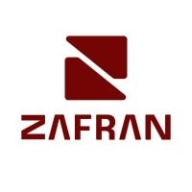


Microsoft Defender for Cloud and SentinelOne Singularity Cloud Security compete in the cloud security category. Given their integration capabilities and ease of use, SentinelOne seems to have the upper hand due to its intuitive design and comprehensive real-time capabilities.
Features: Microsoft Defender for Cloud integrates seamlessly with Microsoft products, providing essential security visibility. Its multi-cloud support, combined with AI and ML-based detections, benefits security teams. SentinelOne Singularity Cloud Security excels with remote workforce features, compliance management, and quick deployment. Its ease of integration enhances vulnerability management across cloud environments.
Room for Improvement: Microsoft Defender for Cloud users report issues with false positives and limited customization for recommendations, as well as complex pricing models. Enhancing third-party integration and automation are necessary improvements. SentinelOne Singularity Cloud Security faces challenges with its resource-intensive nature and occasional false positives. More stable agent deployments and improved UI and documentation would benefit users.
Ease of Deployment and Customer Service: Both Microsoft Defender for Cloud and SentinelOne Singularity Cloud Security support various cloud environments; however, Microsoft's support for private and hybrid clouds is noteworthy. Microsoft's technical support is inconsistent, whereas SentinelOne offers straightforward deployment in public cloud environments and requires improvement in support response times.
Pricing and ROI: Microsoft Defender for Cloud has mid-to-high pricing, often bundled with Azure services, leading to complex cost calculations, yet offers substantial ROI through Azure integration. SentinelOne Singularity Cloud Security provides fair and competitive pricing with flexible licensing. Despite seeming high to some, its modular approach helps organizations manage expenses effectively, achieving ROI through foundational security practices.



| Company Size | Count |
|---|---|
| Small Business | 26 |
| Midsize Enterprise | 7 |
| Large Enterprise | 45 |
| Company Size | Count |
|---|---|
| Small Business | 44 |
| Midsize Enterprise | 21 |
| Large Enterprise | 53 |
Zafran Security integrates with existing security tools to identify and mitigate vulnerabilities effectively, proving that most critical vulnerabilities are not exploitable, optimizing threat management.
Zafran Security introduces an innovative operating model for managing security threats and vulnerabilities. By leveraging the threat exposure management platform, it pinpoints and prioritizes exploitable vulnerabilities, reducing risk through immediate remediation. This platform enhances your hybrid cloud security by normalizing vulnerability signals and integrating specific IT context data, such as CVE runtime presence and internet asset reachability, into its analysis. No longer reliant on patch windows, Zafran Security allows you to manage risks actively.
What are the key features of Zafran Security?
What benefits can users expect from Zafran Security?
In industries where security is paramount, such as finance and healthcare, Zafran Security provides invaluable protection by ensuring that only exploitable vulnerabilities are addressed. It allows entities to maintain robust security measures while allocating resources efficiently, fitting seamlessly into existing security strategies.
Microsoft Defender for Cloud is a comprehensive security solution that provides advanced threat protection for cloud workloads. It offers real-time visibility into the security posture of cloud environments, enabling organizations to quickly identify and respond to potential threats. With its advanced machine learning capabilities, Microsoft Defender for Cloud can detect and block sophisticated attacks, including zero-day exploits and fileless malware.
The solution also provides automated remediation capabilities, allowing security teams to quickly and easily respond to security incidents. With Microsoft Defender for Cloud, organizations can ensure the security and compliance of their cloud workloads, while reducing the burden on their security teams.
SentinelOne Singularity Cloud Security offers a streamlined approach to cloud security with intuitive operation and strong integration capabilities for heightened threat detection and remediation efficiency.
Singularity Cloud Security stands out for its real-time detection and response, effectively minimizing detection and remediation timelines. Its automated remediation integrates smoothly with third-party tools enhancing operational efficiency. The comprehensive console ensures visibility and support for forensic investigations. Seamless platform integration and robust support for innovation are notable advantages. Areas for development include improved search functionality, affordability, better firewall capabilities for remote users, stable agents, comprehensive reporting, and efficient third-party integrations. Clarity in the interface, responsive support, and real-time alerting need enhancement, with a call for more automation and customization. Better scalability and cost-effective integration without compromising capabilities are desired.
What are SentinelOne Singularity Cloud Security's standout features?SentinelOne Singularity Cloud Security is deployed in industries needing robust cloud security posture management, endpoint protection, and threat hunting. Utilized frequently across AWS and Azure, it assists in monitoring, threat detection, and maintaining compliance in diverse environments while providing real-time alerts and recommendations for proactive threat management.
We monitor all Cloud-Native Application Protection Platforms (CNAPP) reviews to prevent fraudulent reviews and keep review quality high. We do not post reviews by company employees or direct competitors. We validate each review for authenticity via cross-reference with LinkedIn, and personal follow-up with the reviewer when necessary.